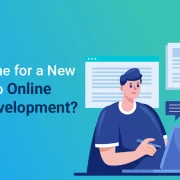
Strategies for Addressing Training Difficulties Among Retail Employees
Summary
The retail sector presents a balancing act. The situation is constantly changing, and employees need to be both highly skilled and flexible. According to a report from Deloitte, 77% of leaders see that having a well-trained workforce is crucial for attaining business prosperity.
However, the past few years have been very challenging for retail workers. Most of them are undergoing unmanageable levels of stress, courtesy of short-notice shift changes and more responsibilities
Innovative solutions and technology play a critical role in keeping them engaged. By embracing technology such as AI-driven training and online learning platforms, retailers can bridge the gap faced in the retail sector.
After all, it’s essential to equip their employees with the tools to excel. In addition to exploring these solutions, we will also look into the art of creating training materials, an aspect of overcoming training obstacles and nurturing a thriving retail team.
Table of Contents:
- Employee Training Challenges in the Retail Sector
- Developing Engaging Training Content
- Tools and Technologies for Consistent Training
- Wrapping Up
Employee Training Challenges in the Retail Sector
Retailers encounter many challenges in providing sustainable employee training. Ensuring training for employees poses an obstacle due to various factors. The following chart outlines the hurdles in employee training within the industry.
| Challenge | Description |
| High Employee Turnover |
|
| Inconsistent Scheduling |
|
| Geographically Dispersed Workforce |
|
| Training Remote Employees |
|
| Lack of Budget and Resources |
|
By understanding these challenges, retailers can develop more effective training strategies.
Also Read: Adapting Workforce L&D Programs to the Virtual and Hybrid Landscapes
Developing Engaging Training Content
Overcoming the hurdles of geographically dispersed workforces and busy employee schedules requires a two-pronged approach: leveraging technology for delivery and creating engaging training content. Hence, we answer an important question: How should training content be developed?
Here’s a table outlining effective strategies for creating engaging training content for retail employees:
| Strategy | Description |
| Tailored Content |
|
| Microlearning Modules |
|
| Interactive Elements |
|
| Gamification Strategies |
|
| Scenario-Driven Training |
|
| Supporting Staffs |
|
While technology offers excellent tools for accessibility and flexibility, engaging content is the heart of effective training tools.
Tools and Technologies for Consistent Training
Large retail chains with locations across vast regions struggle to deliver in-person training programs efficiently. Traditional methods, like flying trainers to different locations, can be costly and time-consuming.
The retail industry faces unique training challenges due to its geographically dispersed workforce and often busy employee schedules. However, technology offers a range of solutions to bridge this gap and ensure consistent, effective training across the organization.
The challenges of geographically dispersed workforces and busy employee schedules can be addressed by the following:
| Tool/Technology | Benefit | Description |
| Learning Management Systems (LMS) | Centralized Platform |
|
| Artificial Intelligence (AI) in Training | Personalized Learning & Automation |
|
| Online Training Delivery Methods | Flexible & Accessible Training |
|
Also Read: Leading the Way in a Hybrid Workforce: Effective Strategies for Distributed Teams
Wrapping Up
By using these tactics and harnessing the capabilities of technology, retail companies can tackle the hurdles of staff training and ensure a skilled workforce. This, in turn, results in enhanced customer service, boosted sales, and a positive workplace atmosphere for employees. Ready to elevate your retail staff training?
Hurix Digital is here to assist in providing corporate training outsourcing services. Our experienced team of learning and development professionals can create tailor-made training sessions depending on your business requirements.
Contact us today to get more information.

A highly enthusiastic and motivated sales professional with over twenty five years of experience in solution selling of training-related applications and services. Maintains an assertive and dynamic style that generates results. Ability to establish long-term relationships with clients built on trust, quality of service and strategic vision. Specializes in financial services, higher ed, publishing and government in the areas of learning and development.







